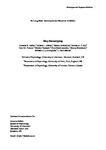Stop stereotyping
| dc.contributor.author | Falben, Johanna | |
| dc.contributor.author | Olivier, JL | |
| dc.contributor.author | Golubickis, Marius | |
| dc.contributor.author | Ho, Nerissa | |
| dc.contributor.author | Persson, LM | |
| dc.contributor.author | Tsamadi, D | |
| dc.contributor.author | Marinopoulou, E | |
| dc.contributor.author | Bianciardi, B | |
| dc.contributor.author | Cunningham, WA | |
| dc.contributor.author | Macrae, CN | |
| dc.date.accessioned | 2020-04-07T10:33:34Z | |
| dc.date.available | 2020-04-07T10:33:34Z | |
| dc.date.issued | 2019-07 | |
| dc.identifier.issn | 1943-3921 | |
| dc.identifier.issn | 1943-393X | |
| dc.identifier.uri | http://hdl.handle.net/10026.1/15520 | |
| dc.description.abstract |
Restraining the expression of stereotypes is a necessary requirement for harmonious living, yet surprisingly little is known about the efficacy of this process. Accordingly, in two experiments, here we used a stop-signal task to establish how effectively stereotype-related responses can be inhibited. In Experiment 1, following the presentation of gender-typed occupational contexts, participants reported the sex of target faces (i.e., Go trials) unless an occasional auditory tone indicated they should withhold their response (i.e., Stop trials). In Experiment 2, following the presentation of male and female faces, participants made either stereotypic or counter-stereotypic judgments, unless a stop signal was presented. Regardless of whether stereotyping was probed indirectly (Experiment 1) or directly (Experiment 2), a consistent pattern of results was observed; inhibition was faster for stereotypic compared with counter-stereotypic responses. These findings demonstrate that stopping stereotyping may be less challenging than has widely been assumed. | |
| dc.format.extent | 1228-1235 | |
| dc.format.medium | ||
| dc.language | en | |
| dc.language.iso | eng | |
| dc.publisher | Springer Science and Business Media LLC | |
| dc.subject | Stereotyping | |
| dc.subject | Response inhibition | |
| dc.subject | Person construal | |
| dc.subject | Executive control | |
| dc.title | Stop stereotyping | |
| dc.type | journal-article | |
| dc.type | Journal Article | |
| plymouth.author-url | https://www.webofscience.com/api/gateway?GWVersion=2&SrcApp=PARTNER_APP&SrcAuth=LinksAMR&KeyUT=WOS:000485229200007&DestLinkType=FullRecord&DestApp=ALL_WOS&UsrCustomerID=11bb513d99f797142bcfeffcc58ea008 | |
| plymouth.issue | 5 | |
| plymouth.volume | 81 | |
| plymouth.publication-status | Published | |
| plymouth.journal | Attention, Perception, & Psychophysics | |
| dc.identifier.doi | 10.3758/s13414-019-01733-4 | |
| plymouth.organisational-group | /Plymouth | |
| plymouth.organisational-group | /Plymouth/Faculty of Health | |
| plymouth.organisational-group | /Plymouth/Faculty of Health/School of Psychology | |
| plymouth.organisational-group | /Plymouth/REF 2021 Researchers by UoA | |
| plymouth.organisational-group | /Plymouth/REF 2021 Researchers by UoA/UoA04 Psychology, Psychiatry and Neuroscience | |
| plymouth.organisational-group | /Plymouth/REF 2021 Researchers by UoA/UoA04 Psychology, Psychiatry and Neuroscience/UoA04 Psychology, Psychiatry and Neuroscience MANUAL | |
| plymouth.organisational-group | /Plymouth/Users by role | |
| plymouth.organisational-group | /Plymouth/Users by role/Academics | |
| dc.publisher.place | United States | |
| dc.identifier.eissn | 1943-393X | |
| dc.rights.embargoperiod | Not known | |
| rioxxterms.versionofrecord | 10.3758/s13414-019-01733-4 | |
| rioxxterms.licenseref.uri | http://www.rioxx.net/licenses/all-rights-reserved | |
| rioxxterms.type | Journal Article/Review |


